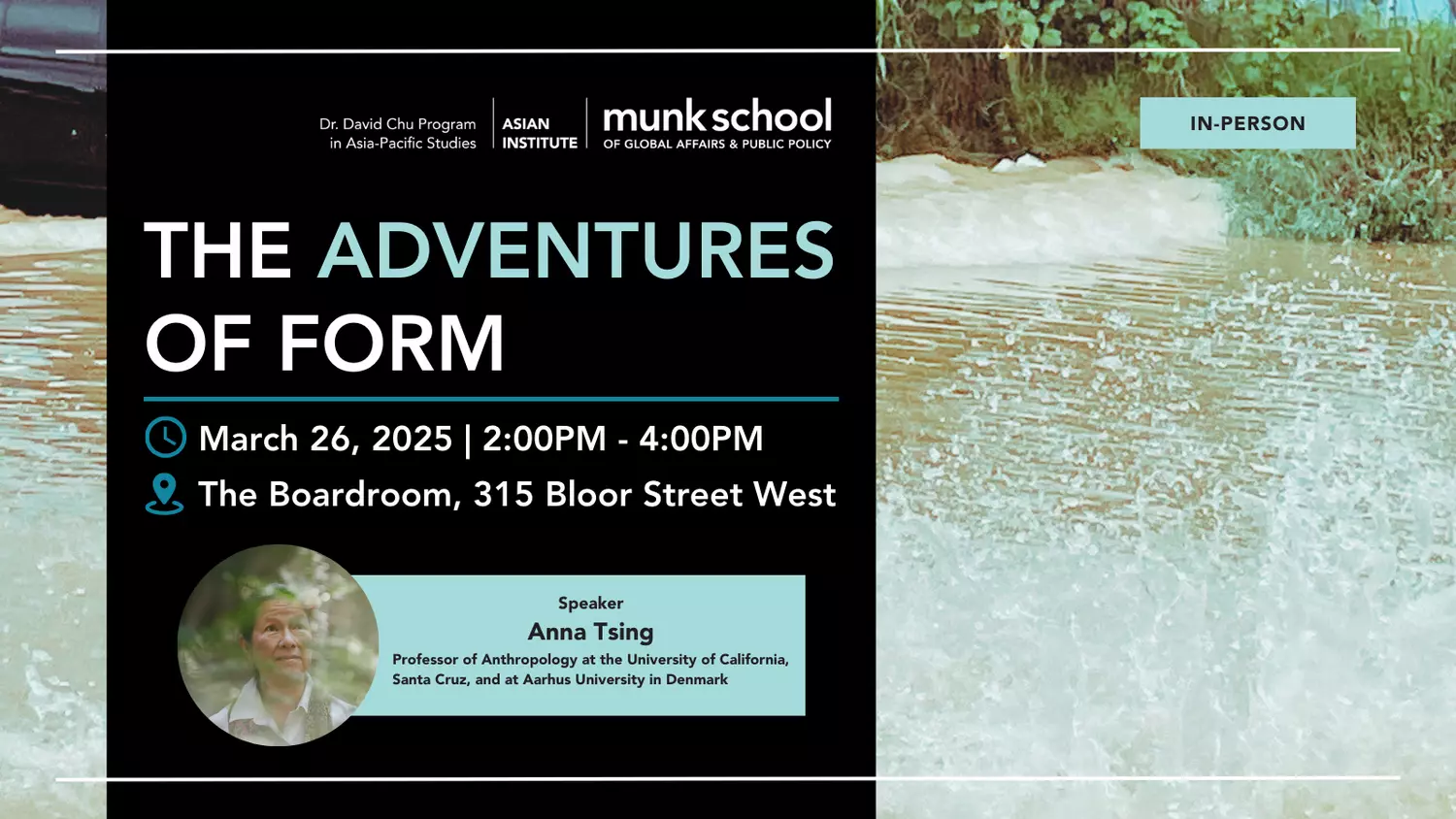The Ondaatje Lecture on South Asian Art, Culture and History was hosted at the Munk School of Global Affairs and Public Policy on 19 October 2018. The event was sponsored by the Centre for South Asian Studies and co-sponsored by the Department of Visual Studies at the University of Toronto Mississauga. Dr. Kavita Singh, who serves as the Dean of and teaches art history at the Dean of the School of Art and Aesthetics at Jawaharlal Nehru University in New Delhi, delivered a lecture titled ‘Uncollecting India: Hidden Histories of a Museum’. Her talk focused on four large-scale artifacts that were collected from India in the 19th century, and how these objects went from being displayed at the Victoria and Albert Museum to being removed, or rather, uncollected.
As Dr. Singh pointed out, “what is prize in one era, becomes embarrassment in another.” New museology traces the origin of ancient artifacts and how were acquired in the first place. It also asks uncomfortable questions that point to colonial loot and tyrannical legacies. The Victoria and Albert Museum is famous for its extraordinary size and for housing the largest collection of Indian artifacts outside of India. While the artifacts were transported with utmost care or often replicated for display, it was difficult to upkeep their maintenance. Here, Dr. Singh presented the first example – the Gateway of Stupa at Sanchi. Since the British colonizers did not have adequate resources to preserve the real stupas, spending on plaster casts become a common method to display stupas to the English public. In December 1870, Lieutenant Henry Hardy Cole constructed a plaster cast of the Sanchi Stupa, which was brought to the Victoria and Albert Museum. Thereafter, various copies of the stupa were installed across museums and galleries. These casts were three-dimensional reproductions of impeccable copies. While the original stupa remained in India, the duplicate was invoked as a symbol of India, providing for a stoking imagination of the British colony. Moreover, these casts furthered displayed the technological prowess of the English.
In later years, however, W.G. Archer – keeper of the Indian Section at the Victoria and Albert Museum – did not care much about transporting the Sanchi cast during renovations. He believed that the cast was too enormous and exorbitant to keep in storage. Therefore, the cast was destroyed to rubble when the Indian section was demolished, and not to be seen any longer. This marked a change in Britain’s attitude towards Indian antiquities, from the desire to cart them off to museums to perhaps what could understood as willingness to take care of them in situ on colonial grounds.
The next ancient artifact that Dr. Singh drew upon was a Mughal colonnade from a palatial apartment within the Agra Fort, built by Shah Jahan. Along with the Taj Mahal, there were a cluster of monuments from the Mughal period in and around the region of Agra, on which a lot of money was spent by the East Indian Company (EIC) for preservation. As the EIC was infamous for keeping a tight hold on its purse strings, it vouched for how magnificent these monuments were viewed to be. After this specific colonnade of five marble pillars found in the Agra Fort were shown in the 1886 London Exhibition, Sir Alfred Lyall gifted it to the Victoria and Albert Museum, which was renamed the South Kensington Museum in 1854. Unfortunately, due to the lack of space in the new Indian section of the museum after renovations, the colonnade was moved to storage. In the 1980s, when Deborah Swallow – the keeper of the section – tried to reinstall the colonnade for public display, she was not allowed to do so. The designer of the gallery thought the colonnade was “too beautiful” and would outshine the other artifacts of the designer’s choice. In its place, a colonnade, likely from Ajmer and built during the period of the Mughal Emperor Jahangir, was installed in the section. Today, although the Agra colonnade remains kept away in storage and restricted by special permissions and a difficult journey, one may ask if its fate is indeed worse than its twin that remains in situ at Agra, where extraordinary marble artistry is being eaten away by pollutants and acid rain.
Another tale of an Indian artifact’s destiny at the Victoria and Albert Museum is that of the Gwalior Gateway. Originally built for the Colonial and Indian Exhibition of 1886, the gateway was a gift from the Maharaja of Gwalior to the museum. Due to the consternation of the museum’s officials at the size of this gift, which weighed 75 tons and stood 60 feet tall, the gateway was dismantled and packed away at the end of the exhibition in 1886. After much lobbying by Major Keith, the gateway was installed in the Indian section of the museum, albeit with its upper portion dismantled because the artifact remained still too tall. In the 1950s, the purpose and planning of this space of display changed, and it became increasingly used to showcase large scale renaissance works, mostly by Raphael. A false front was thus put up before the Gwalior Gateway such that it may not jar with the glory of the Raphael paintings. The protuberance in the wall of the section serves as the only evidence to prove the presence of the Gwalior gateway in the Museum today. Such an incident is symptomatic of the deeper ambivalences in Britain about Indian art, collections and recollections of the British Empire.
As a final example, Dr. Singh shared the story of a 17th century house front in the Indian city of Ahmedabad, which was transported to the Victoria and Albert Museum and occupied an entire wall of the museum’s Indian Section. After being alerted of the possible destruction of the house front, John Irwin – a textile expert working under W.G. Archer – convinced the Museum to sell the house front for a mere £40 to the Sarabhai family of Ahmedabad. The Sarabhai family was only asked to pay for the shipment back to India, since the house front was now unwanted by the Museum. The Sarabhais were wealthy industrialists, owners of textile mills and collectors of antique textiles. They were in the process of shaping what would become one of the world’s most prominent textile museums – the Calico museum, where the house front now ornaments the courtyard. Unlike several other stories of evicted Indian artifacts, the tale of this house front serves as a happy ending of its eventual return to home.
Dr. Kavita Singh concluded the discussion by highlighting the fact that many artifacts were ruthlessly passed verdicts on and destroyed after being sighted as imitative, inauthentic, bulky and costly to maintain, rather than being venerated as objects of beauty, art and history. For the British authorities, the elimination of these objects was viewed as collateral damage in the process of getting rid of enormous amounts of items extracted from the Indian colony. The problem at hand is not just one of space, but also one of symbolism for colonization and the problematic methods of historical acquisition. The prizes of the metropolitan started to look out of place, as public interest shifted away from a region over which the Empire no longer had formal colonial control. Pride became a problem.
Trisha Biswas is an event reporter for Synergy: The Journal of Contemporary Asian Studies, South Asia section.








